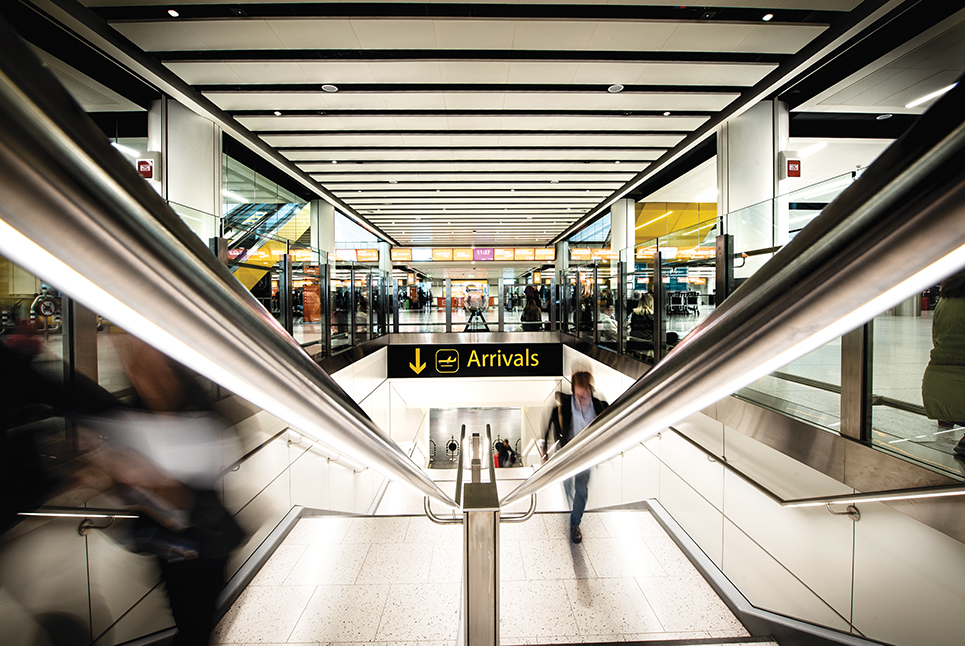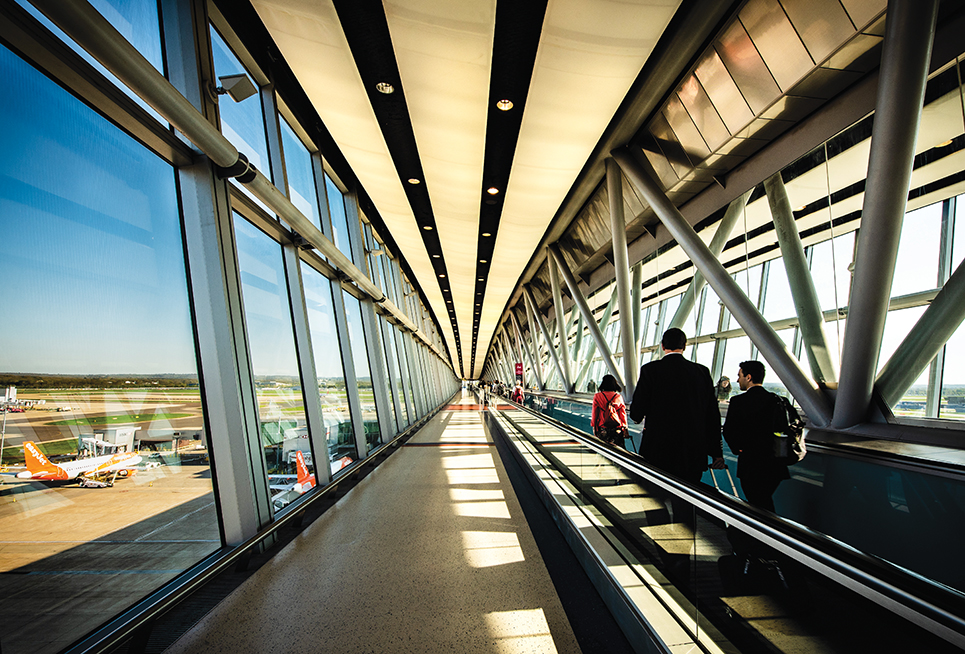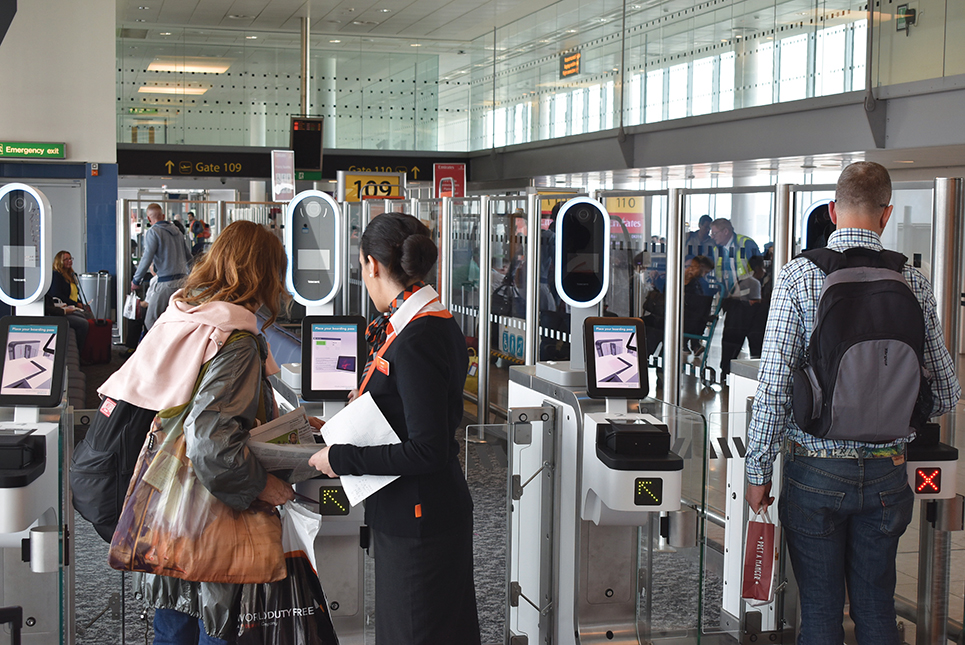
With over 45 million passengers now passing through the airport each year, Gatwick is now the only airport in the world’s top 20 for passenger growth that has a single runway. This growth has gone hand in hand with increasing levels of passenger service and satisfaction, driven by innovation and investment.
To help manage the ever increasing numbers who choose to fly from Gatwick, the airport has an ambition to reduce queue time and put passengers in charge of their time at the airport. Investment in technologies which automate the passenger processing part of travelling through an airport is critical to making this ambition a reality and includes implementing more efficient security processes and bag drop services.
Self-service bag drop
An investment of £36m was made in 2015 to create the world’s largest self-service bag drop zone in the North Terminal, which has enabled Gatwick to handle greater numbers of passengers by increasing peak check-in capacity from 3,000 to 4,350 passengers per hour, with the average bag-drop transaction taking less than two minutes. The North Terminal now has more than 60 self-service bag drop units, with others located in the South Terminal.
Five airlines are currently using this self-service bag drop technology at Gatwick with excellent passenger feedback and a further five airlines due to adopt the technology soon.
Self-service bag drop was originally trialled in the South Terminal, proving that queuing times can be significantly shortened by allowing passengers to take charge of their own journey through the airport. The technology enables passengers who have checked in online to take their bags straight to a machine upon arrival at the airport, where they can print their luggage tag, apply it to their bag and load it straight onto Gatwick’s state-of-the-art baggage sorting system. This means the airport check-in process can be completed in less than two minutes.
Security screening
A world-leading new security zone was opened in 2016 as part of the transformation of the North Terminal, following successful implementation of the technology in the South Terminal.
The £36 million project formed a major part of the airport’s growth strategy as investment in the state-of-the-art facility has halved the time it takes passengers to pass through security, while maintaining the strictest security measures, and allows Gatwick to screen up to 5,000 passengers per hour.
Each of the ten new security lanes has seven ‘loading points’, reducing queue times and increasing the number of passengers able to prepare their belongings for the screening process at any one time. There are also dedicated lanes for premium travellers, families and passengers with reduced mobility.
On entrance to the security area, passengers pass through a set of 17 new e-gates, which also help to reduce the build-up of queues and speed up the process of passing through security.
Biometrics
Gatwick has also recently announced the UK’s first trial of end-to-end biometrics - where personal data at the airport’s self-service bag drops will be recognised by new automated self-boarding gates - simplifying and speeding up the process for passengers and reducing the risk of human error.
The ambition is for each departure gate to have pre-boarding zones with five entry points, using e-gate technology and biometrics to process passengers.
The trial is being run in partnership with easyJet - Gatwick’s biggest airline - and the new self-boarding technology will identify each passenger and verify that their passport, face and boarding card all match, a process which takes less than 20 seconds.
The trial is the first and most extensive of its kind in the UK and will run for at least three months so that around 10,000 passengers take part on easyJet’s 43 Gatwick routes. This range should allow the airport to gather enough meaningful information to be able to spot trends and adapt the technology to ensure the optimum experience for passengers.
Gatwick will be looking at how long each interaction takes, what this means for queue times, how it simplifies the passenger journey, how passengers interact with the technology, and how intuitive the process is. The faster, more efficient process also has the potential to improve aircraft departure times.
The boarding process has traditionally been handled by airline staff, but can now be automated with this unique technology, reducing queue times and freeing up airline staff to assist those who need it most.
Gatwick prides itself on providing innovative solutions to enhance the passenger experience at every touch point. Embracing the latest digital enhancements is therefore vital as they will help us to improve our efficiency further, which in turn allows the airport to grow.
To enable Gatwick’s digital transformation the airport has just future proofed its entire IT network for the next decade and can now take advantage of new, modern technologies for the benefit of airport users, including more than 250 onsite businesses, 30,000 staff and 45 million annual passengers. It also makes the network more resilient and tolerant to disruption.
The airport is also transforming the way information is communicated and will soon connect passengers to intelligent chat bots using Facebook Messenger, Skype, and other popular apps. Other initiatives going live soon include augmented reality wayfinding and superfast Wi-Fi for passengers. Behind the scenes, Gatwick is using machine learning to bolster security and develop passenger journey mapping so gate staff can track late running passengers and send notifications via a range of apps.
With the rate of growth the airport has experienced, it is essential Gatwick is able to continue finding more efficient ways of processing passengers through the airport safely and securely.








